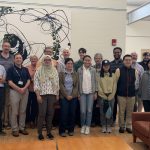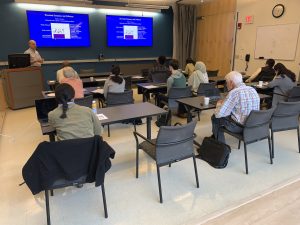A rule-based VCell model used in J Immunol publication
2025-03-09. Alberto Millan from Kite Corp and Lewis Lanier from UCSF published a study on ITAM-mediated human Natural killer cells signaling. VCell was used to create a rule-based model in .bngl (BioNetGen) format.
Millan, A. J., Allain, V., Nayak, I., Libang, J. B., Quijada-Madrid, L. M., Arakawa-Hoyt, J. S., … & Lanier, L. L. (2025). SYK negatively regulates ITAM-mediated human NK cell signaling and CD19-CAR NK cell efficacy. The Journal of Immunology, vkaf012
https://pubmed.ncbi.nlm.nih.gov/40073103/

 […]
[…]